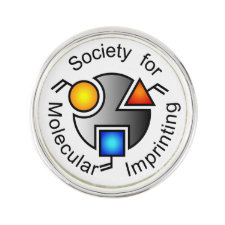
Authors: Slinchenko O, Rachkov A, Miyachi H, Ogiso M, Minoura N
Article Title: Imprinted polymer layer for recognizing double-stranded DNA.
Publication date: 2004
Journal: Biosensors and Bioelectronics
Volume: 20
Issue: (6)
Page numbers: 1091-1097.
DOI: 10.1016/j.bios.2004.06.027
Alternative URL: http://www.sciencedirect.com/science/article/B6TFC-4CVX44P-1/2/fb4a59e20735a92249f9dced4304ebad
Abstract: A method of preparing a thin polymer layer able to recognize double-stranded DNA (dsDNA) was developed by using 2-vinyl-4,6-diamino-1,3,5-triazine (VDAT) as a functional monomer for creating a DNA-imprinted polymer. The formation of hydrogen bonds between VDAT and A-T base pairs in dsDNA was confirmed by measuring the effects of VDAT on the melting point and the NMR and CD spectra of dsDNA. An imprinted polymer that can recognize dsDNA of the verotoxin gene was prepared by polymerizing VDAT, acrylamide, a crosslinking agent, and the template verotoxin dsDNA on a silanized glass surface. The specificity of this polymer layer for binding verotoxin dsDNA was investigated by using fluorescent-labelled dsDNAs. The fluorescence intensity of the polymer layer after binding verotoxin dsDNA was twice as high as after binding oligo(dG)-oligo(dC), indicating that verotoxin dsDNA was preferentially bound to the polymer imprinted with verotoxin dsDNA. The kinetics of verotoxin dsDNA binding to the imprinted polymer were analyzed by surface plasmon resonance measurements. The dissociation constant (KD) was low, of the order of 10-9 M



Join the Society for Molecular Imprinting

New items RSS feed
Sign-up for e-mail updates:
Choose between receiving an occasional newsletter or more frequent e-mail alerts.
Click here to go to the sign-up page.
Is your name elemental or peptidic? Enter your name and find out by clicking either of the buttons below!
Other products you may like:
 MIPdatabase
MIPdatabase









